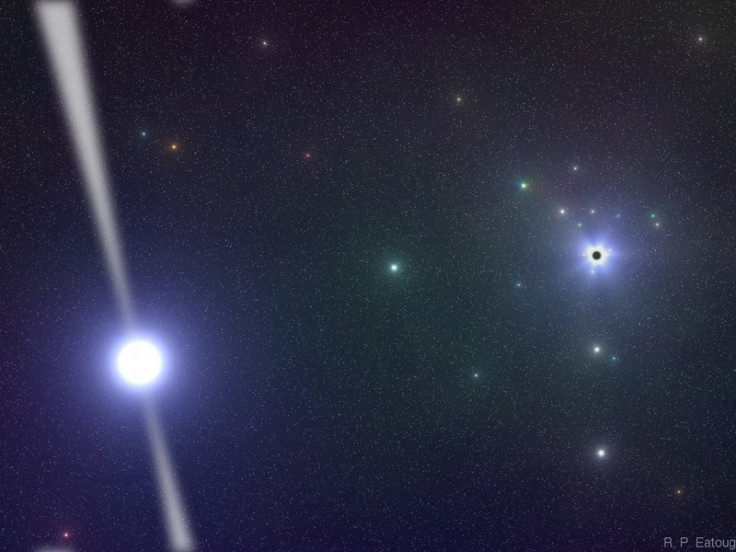Magnetar, A Pulsar With An Extremely Strong Magnetic Field, Discovered At The Center Of The Milky Way
Astronomers have discovered a magnetar, a pulsar with an incredibly strong magnetic field, at the center of the Milky Way galaxy. This magnetar could be used as a way to observe the supermassive black hole at the center of our galaxy.

Led by the Max Planck Institute for Radio Astronomy (MPIfR), located in Bonn, Germany, a team of radio astronomers was able to measure the magnetic field of the pulsar near Sagittarius A*, or Sgr A*, the supermassive black hole located at the center of the Milky Way. A pulsar is a neutron star that emits beams of electromagnetic radiation.
According to the astronomers, the pulsar near the center of our galaxy will provide a glimpse into a little known region, allowing for the indirect observation of the black hole and the area surrounding Sgr A*. The researchers believe the pulsar can also serve to test Albert Einstein’s theory of General Relativity.
The pulsar’s discovery was made possible first by NASA's Swift telescope detecting an X-ray source near Sagittarius A* followed by NASA's NuSTAR telescope recording regular pulsations every 3.7 seconds. Radio observatories confirmed the discovery of a pulsar. Lead author Ralph Eatough said in a statement, from MPIfR’s Fundamental Physics Research department, “On our first attempt the pulsar was not clearly visible, but some pulsars are stubborn and require a few observations to be detected. The second time we looked, the pulsar had become very active in the radio band and was very bright. I could hardly believe that we had finally detected a pulsar in the Galactic center!”
The team of astronomers then performed a series of follow-up observations to confirm the discovery. To determine the strength of the pulsar’s magnetic field, the astronomers observed the twisting of light traveling to Earth through a magnetic field, called the Faraday Effect. The researchers believe the pulsar is just half a light-year from the black hole.
The pulsar was named PSR J1745-2900 and classified as a magnetar. This type of pulsar can have a magnetic field 100,000 billion times that of Earth’s own magnetic field. The newly-discovered pulsar can be used to observe the properties of the supermassive black hole at the center of our galaxy. The black hole is currently pulling in gas and other surrounding debris in a process known as accretion. As the gas falls into the black hole it creates a swirling magnetic field that could speed the accretion process or send material flying outward along the field’s poles, reports the National Radio Astronomy Observatory.
According to the astronomers, the pulsar can be used to map the black hole’s magnetic field as well as the possible discovery of other pulsars. The research was published in the journal Nature.
© Copyright IBTimes 2024. All rights reserved.












